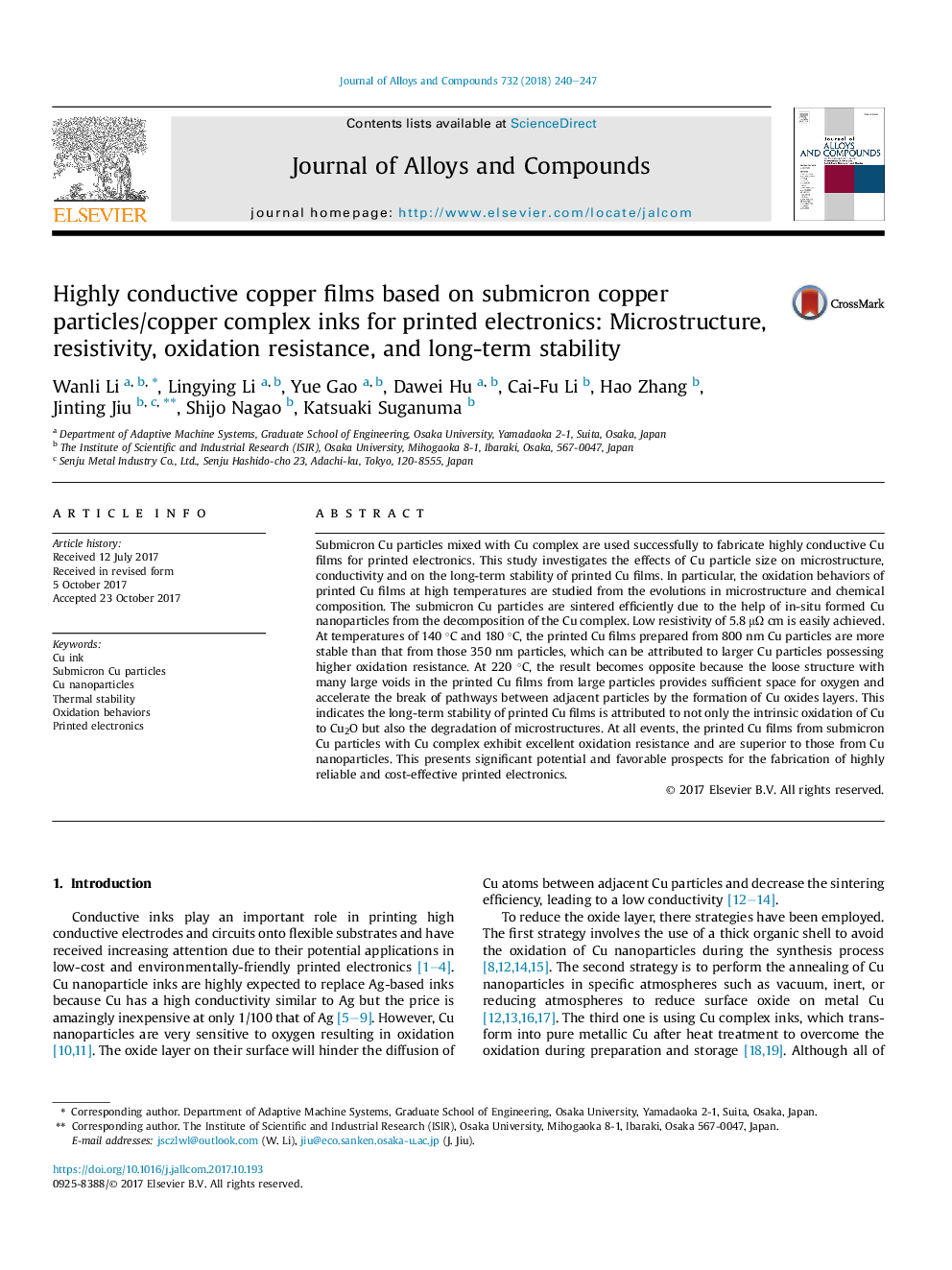| Article ID | Journal | Published Year | Pages | File Type |
|---|---|---|---|---|
| 7994979 | Journal of Alloys and Compounds | 2018 | 8 Pages |
Abstract
Submicron Cu particles mixed with Cu complex are used successfully to fabricate highly conductive Cu films for printed electronics. This study investigates the effects of Cu particle size on microstructure, conductivity and on the long-term stability of printed Cu films. In particular, the oxidation behaviors of printed Cu films at high temperatures are studied from the evolutions in microstructure and chemical composition. The submicron Cu particles are sintered efficiently due to the help of in-situ formed Cu nanoparticles from the decomposition of the Cu complex. Low resistivity of 5.8 μΩ cm is easily achieved. At temperatures of 140 °C and 180 °C, the printed Cu films prepared from 800 nm Cu particles are more stable than that from those 350 nm particles, which can be attributed to larger Cu particles possessing higher oxidation resistance. At 220 °C, the result becomes opposite because the loose structure with many large voids in the printed Cu films from large particles provides sufficient space for oxygen and accelerate the break of pathways between adjacent particles by the formation of Cu oxides layers. This indicates the long-term stability of printed Cu films is attributed to not only the intrinsic oxidation of Cu to Cu2O but also the degradation of microstructures. At all events, the printed Cu films from submicron Cu particles with Cu complex exhibit excellent oxidation resistance and are superior to those from Cu nanoparticles. This presents significant potential and favorable prospects for the fabrication of highly reliable and cost-effective printed electronics.
Related Topics
Physical Sciences and Engineering
Materials Science
Metals and Alloys
Authors
Wanli Li, Lingying Li, Yue Gao, Dawei Hu, Cai-Fu Li, Hao Zhang, Jinting Jiu, Shijo Nagao, Katsuaki Suganuma,
